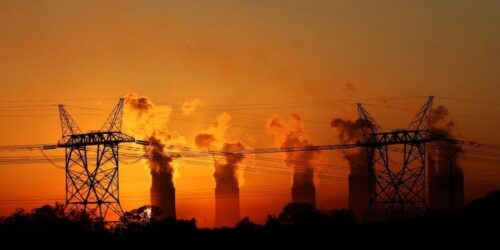Amid major gas supply constraints, the government may have to rethink its energy subsidy priorities after coughing up over Rs80 billion per annum in handouts to the export industry in the last over three years as it found little connection between subsidies and export growth, with the textile industry even reneging on its side of the pledge.
A senior government official told Dawn that the Ministry of Energy had received an independent study from three international reputed organisations — The University of Chicago, The London School of Economics and Political Science and International Growth Centre — which did not comprehensively support a narrative in the country that gas and electricity subsidies had direct link to export growth.
The ministries of energy, finance and planning are convinced about rent-seeking and misuse in the textile sector, he said.
APTMA seeks PM’s help to stop energy ministry from curtailing supplies
Also, the Ministry of Energy feels aggrieved by the textile industry’s attempts to protect gas supplies and subsidies through courts instead of honouring its commitments to spare gas quantities being used in captive power plants (CPPs) while gas companies struggled to manage supplies for other priority sectors.
“They got stay orders against efficiency tests and minor adjustments in subsidised tariffs. They cannot have best of two worlds by squeezing the state,” the official said.
This is on top of other subsidies and facilitations like DTRE, TERF and DLTL schemes as well as tax exemptions.
On the other hand, the influential All Pakistan Textile Mills Association (APTMA) is seeking urgent intervention of the prime minister to block the energy ministry and related cabinet committees from additional steps including disruption in gas supplies.
The Ministry of Energy has been advised by some experts to get more specific studies done on urgent basis to conclude whether the return in the shape of export on each dollar of subsidy paid to the textile sector was justified. The ministry believed that the major part of their production went into the domestic market.
This was based on the study conducted by the above international institutions while examining the entire value chain of five export-oriented sectors between 2014 and 2020.
The study concluded that preferential tariffs had “limited effects on exports” and while partial evidence suggested gas subsidy increased the overall exports by 6pc, statistical evidence was weak. This highlighted the need for specific study for impact on textile export and the cost benefit analysis.
On the other hand, the study, however, confirmed larger increases in domestic sales for both gas and electricity subsidy.
It observed that subsidies had “smaller overall effects with much less statistical significance” and in overall terms concluded that “preferential tariffs are not a game changer.
“There may be positive effects, but the sensitivity of results suggests they do not lead to transformative changes”, the study observed.
It also noted that largest firms in the export sector were receiving subsidies and, perhaps because of political reasons, other eligible firms were not getting such subsidy.
The government has been providing subsidised gas and power at $6.5 per MMBTU and nine cents per kwh, respectively, for three years, but now finds it unsustainable and untargeted.
It estimates the cost of annual gas subsidy at Rs65bn and Rs20bn on power subsidy – leading to circular debt build up.
Official sources said about 1,870 export industries were currently getting uninterrupted gas on SNGPL network (mostly Punjab) while about 420 factories were on SSGCL network (mostly in Sindh). Because of gas crunch, about 375 factories with captive power plants had been disconnected because they were running their captive power plants (mostly inefficient) at subsidised gas while gas for their processes was still intact.
The official said the subsidy was originally meant for one year to revive the export sector but was later extended for another year till June 2020 because of Covid-19 challenges. The textile mills had agreed to end gas subsidy on June 30, 2020.
The energy ministry is now pushing for targeted subsidy to exporters based on export proceeds. Specifically for textile exports, it wants gas supply only for cloth-making and complete ban on gas consumption by CPPs as both the process and captive power plants have separate meters. The ministry believes that power supply at nine cents per unit was regionally competitive and a ban on gas to captive power would shift these mills to use power from the national grid.
On the other hand, the APTMA, in a letter to Prime Minister Imran Khan, sought an urgent meeting.
It said the energy minister had assured the Punjab export sector of continued gas supply provided they agreed to increase the price to $9MMBTU from $6.5.
“APTMA agreed to this in the presence of Abdul Razak Dawood” but subsequently presented a Gas Management Plan to the CCOE on Dec 2, 2021 under which gas to CPPs, whether co-generation or not, would be load shed from Dec 15,” the letter said.
“The Punjab-based industry was thereof hit with a double whammy — increase in gas price at $9, double that of Sindh and Khyber Pakhtunkhwa, and load shedding from Dec 15. Under these circumstances, some member mills went to court on Dec 8 — full six days after the CCOE — and got stay on the basis of discrimination vs other provinces”.
Claiming that 70pc of the textile industry was Punjab based and suspension of gas will bring 80pc of the industry to a complete halt, the APTMA said it would have “an extremely negative impact on exports and will bring to an end the extremely positive increase in exports and investment witnessed during the last year”, adding that if the industry was “unable to deliver goods on order, orders once lost will be a permanent loss to Pakistan, and extremely difficult if not impossible to reverse”, resulting in negative impact on employment and investments.







